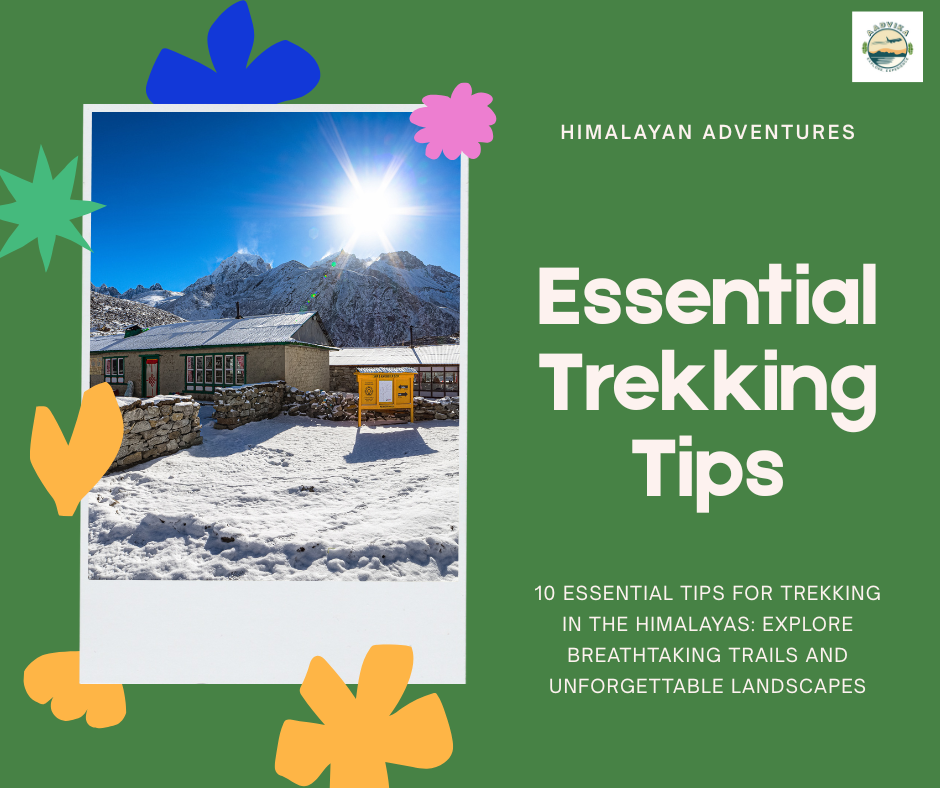Trekking in the Himalayas offers a profound experience, blending breathtaking landscapes with spiritual and cultural richness. This guide is designed to help both beginners and seasoned trekkers navigate the challenges and beauty of the Himalayan trails.
Choosing the Right Trek
When selecting a trek in the Himalayas, it’s essential to consider your level of experience and physical ability.
– Har Ki Dun Trek: Located in Uttarakhand, this moderately challenging trek offers stunning alpine meadows and ancient villages. It takes about 7 days to complete and reaches an altitude of 11,675 ft.
– Valley of Flowers Trek: Also in Uttarakhand, this trek is known for its vibrant flora and is generally easy to moderate. It takes 4-6 days and reaches 14,100 ft.
– Beas Kund Trek: In Himachal Pradesh, this trek is a great introduction to Himalayan trekking, taking about 4 days and reaching 12,100 ft.
– Nag Tibba Trek: Perfect for beginners, this weekend trek in Uttarakhand offers stunning views of snow-capped peaks and reaches 9,915 ft in just 2 days.
Must-Know Tips for Trekking
1. Plan Ahead: It’s crucial to plan your trek at least three months in advance. This includes booking accommodations, arranging transport, and preparing necessary gear.
2. Assess Fitness: Ensure you are physically fit for the trek. If you’re a beginner, start with short and easy trails to build strength.
3. Choose the Right Season: The best times for trekking in the Himalayas are pre-monsoon (March-June) and post-monsoon (September-November) for pleasant weather.
4. Use Quality Equipment: Invest in a good-quality backpack and essential trekking gear such as sturdy shoes and layers of clothing.
5. Consider Local Guides: Hiring local guides can significantly enhance safety and provide valuable insights into the trails and local culture.
6. Stay Hydrated: Drink plenty of water during the trek to avoid dehydration and other altitude-related issues.
7. Manage Altitude Sickness: Gradual ascents and rest days are vital to avoid altitude sickness.
Breathtaking Trails
1. Everest Base Camp Trek, Nepal: One of the most famous treks, offering stunning views of the world’s highest mountain.
2. Kanchenjunga Circuit Trek, Nepal: Known for its rugged and uncrowded trails, offering mind-blowing scenery and warm local hospitality.
3. Manaslu Circuit Trek, Nepal: Offers rugged beauty and sights of the Manaslu Mountain, the eighth highest peak in the world.
4. Markha Valley Trek, Ladakh, India: A classic trek through the high altitudes of Ladakh with breath-taking views of the Indian Himalayas.
Preparing for Your Adventure
– Research: Do thorough research on your chosen trek, including trail maps and local conditions.
– Training: Build your physical strength through regular exercise and endurance training.
– Community Engagement: Join trekking communities to gain insights and tips from experienced trekkers.
Conclusion
Trekking in the Himalayas is an experience that combines physical adventure with spiritual and cultural exploration. By choosing the right trek, preparing effectively, and following essential tips, you can make your Himalayan adventure both memorable and safe.

